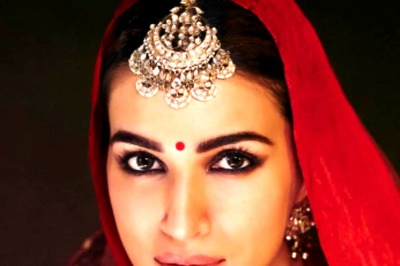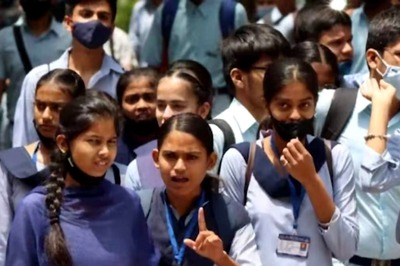
views
Bangalore: With the Congress unable to regain its former hold over voters and with no one in a position to defeat India's grand old party on its own, regional forces are increasingly filling up political space across the country.
These parties are disliked in public by the two dominant parties, the Congress and Bharatiya Janata Party (BJP), despised in private because of their clout, but wooed with generous seat-sharing arrangements before elections or with plum cabinet posts later.
India's regional parties, it is clear, are here to stay.
Most regional parties have in the last 13 years aligned with the Congress or the BJP at one time or the other.
Six regional parties and the Left have just launched a Third Front in the hope that the political and economic situation in the country favours a repeat of 1996 when the BJP emerged as the single largest party, but could not muster enough support to gain majority in the 545-member Lok Sabha.
With the Communists and regional parties garnering more seats than the Congress in 1996, the latter had to support a government formed by them to keep the common enemy, the BJP, out.
The 13 regional parties that got under the umbrella of United Front included the Janata Dal, Telugu Desam, Samajwadi Party, DMK, Tamil Maanila Congress, Asom Gana Parishad and National Conference among others.
Equally surprising was the regional parties' choice of H D Deve Gowda as prime minister. He was the Karantaka chief minister when the United Front decided to pitchfork him into the country's top post.
Gowda quit as prime minister in less than a year after the Congress withdrew support to the United Front, which then picked Inder Kumar Gujral as prime minister. He too did not last long.
After the 1999 election, the Telugu Desam and DMK propped up a BJP-led government. While the DMK joined the Atal Bihari Vajpayee ministry, the Telugu Desam extended support from outside.
The Janata Dal splintered to become Rashtriya Janata Dal, Janata Dal-United, Lok Janshakti Party (LJP), all active mainly in Bihar, and Janata Dal-Secular, with its dominant base in Karnataka.
While the RJD and LJP went with the Congress, the JD-U aligned with the BJP.
The JD-Secular supported the Congress-led United Progressive Alliance government but opposed it on the India-US nuclear deal like the four Left parties.
In 2006, the JD-Secular forged an alliance with the BJP in Karnataka and took power in the state.
The ease with which some regional parties have brokered deals with the two national parties, after denouncing them publicly, makes the longevity of groupings formed by them suspect.
But such is their clout that when they come together they can effectively checkmate the Congress and BJP.
Most regional outfits are family holdings and all of them swear by secularism, even while aligning with the BJP which, when they are at war with, they dub 'communal'.
Leaders of these parties always declare they are not in the race to be prime minister but drop enough hints they would not mind if the post comes their way.
They also organise huge rallies in their fiefdoms to exhibit their clout to other partners as well the national parties. They are extremely friendly with the media when they organise rallies, but nurse a grouse that the media runs them down.
They are realistic, however.
They know it is the numbers that count, within the group and as a group. Together they hope to be kingmakers when they fall short of members in the Lok Sabha.
The regional satraps may be responsible for political instability at the national level. But without them the elections would be too orderly and dull.
Hate them, love them or wish them to be away. They will return chorusing 'Jai Ho', either ahead or after the polls.
















Comments
0 comment